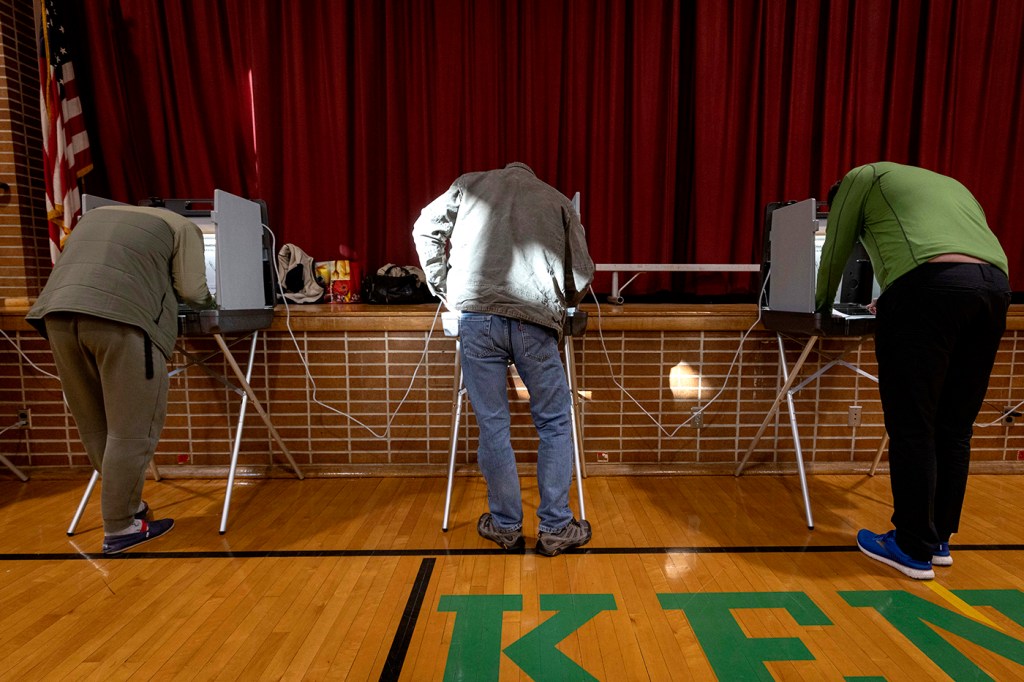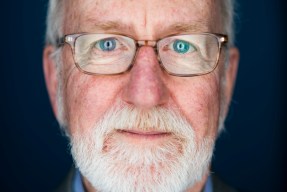Voters rejected the latest police reform measure in Minneapolis. Here’s why.

A police accountability measure that would have replaced the Minneapolis Police Department with a newly created Department of Public Safety was defeated on Tuesday by voters in the city where George Floyd was killed by a police officer in May 2020.

People want the police to do their jobs differently, says criminal justice professor Jack McDevitt. Photo by Adam Glanzman/Northeastern University
“People are torn,” says Northeastern’s Jack McDevitt, professor of the practice in criminology and criminal justice. “People absolutely feel that policing has to change and that reform is important, but it’s often posed in juxtaposition of defund the police or support the police,” he adds.
Specifically, Minneapolis voters were asked if they would support an amendment to the city’s charter that would dismantle the Police Department in the charter, creating instead a new Department of Public Safety. It would take a “public health approach to safety,” according to the amendment. That agency would include “licensed police officers if necessary.”
Residents rejected the measure 56% to 43%.
It was a defeat for Yes4Minneapolis, the measure’s chief backer, which describes itself as a “Black-led, multiracial campaign.” Members vowed to keep fighting.
“We changed the conversation about what public safety should look like,” the group tweeted.
McDevitt, who leads a Northeastern advisory board on ways to improve the university’s police department, spoke to News@Northeastern about the Minneapolis vote and police reform in general. His comments were edited for brevity and clarity.
How do you read the results of the vote?
People are afraid of not having a police department, and they don’t know what would happen if something happened to them or their family members and they couldn’t call the police. So they like the police, but they want the police to do their jobs differently.
In order for that to happen, wouldn’t politicians have to negotiate with police unions? As we have seen with vaccine mandates, that’s easier said than done. How does a mayor, for example, negotiate with the police union to change the way cops do their jobs?
Here in Boston and along the East Coast―New York and Philadelphia, we have the more older traditional police unions that are somewhat resistant to change. In other parts of the country, the union is part of a conversation about how to reform police, so I wouldn’t paint them with a broad brush.
One of the things that came out of the Minneapolis vote that I found particularly compelling is that part of the concern [by supporters of the amendment] was a minimum manning requirement that there had to be so many police officers on the streets at certain times. And while there’s some reality to that, we know from research going back years and years that the number of police driving around has zero impact on crime. It’s what police do, not how many of them are out there.
Homicides are up in many large cities and some people point to the police reform movement as being one of the causes. Is there a correlation between rising homicide rates in certain cities and the police reform movement?
I don’t know that there’s a relationship there. Homicides are a function of a whole variety of things that have more to do with COVID-19 than policing. We’ve had people who have been incredibly frustrated [by the pandemic]. We’ve had people who have been locked indoors to stay safe. We’ve also seen increases in intimate partner violence and violence among people who have been forced to live together for the past 15 months. So the homicide increase is a combination of factors that are about the situation that people find themselves in.
We have to pay attention to rising homicide rates and gun violence rates across the country in certain cities, but the way to do that is to work with the community and not just hire more police or to tell police to do the same thing they’ve always done.
So how do you get police officers to think and behave differently?
So much of changing the police is changing the culture. When George Floyd was killed by Derek Chauvin, one of the things that struck me and many others is that there were those three other officers there, but they did nothing to stop it.
They have a rule in Minneapolis that says you have to intervene in a situation like that and stop an officer from doing that. But they didn’t, because the culture of the organization was such that they knew they would get into all kinds of trouble with their peers.
One example of that is Camden, New Jersey. A few years ago they got rid of the old police department and started a new one. They only hired 100 of the officers back who originally worked there. Homicides and violent crime went down by over 40%. Community satisfaction with the police went up. They had a new chief and new officers who had a different orientation on how to work with the community. You don’t have to fire the entire police department to get there. You really have to challenge some of the existing culture.
Besides culture, what else needs to change?
We need to rethink what we ask the police to do. Let’s say there’s a person sleeping on the sidewalk. They may have a substance abuse problem. What are the police going to do about that problem? We need to have individuals who have the capacity to deal with the issues that they’re responding to.
Some communities across the country are already having that conversation―do we send mental health professionals, or do we send police officers?
I do believe enough in people that we can have a thoughtful conversation about what we want as the best state for our communities, and how we get there.
For media inquiries, please contact media@northeastern.edu.





